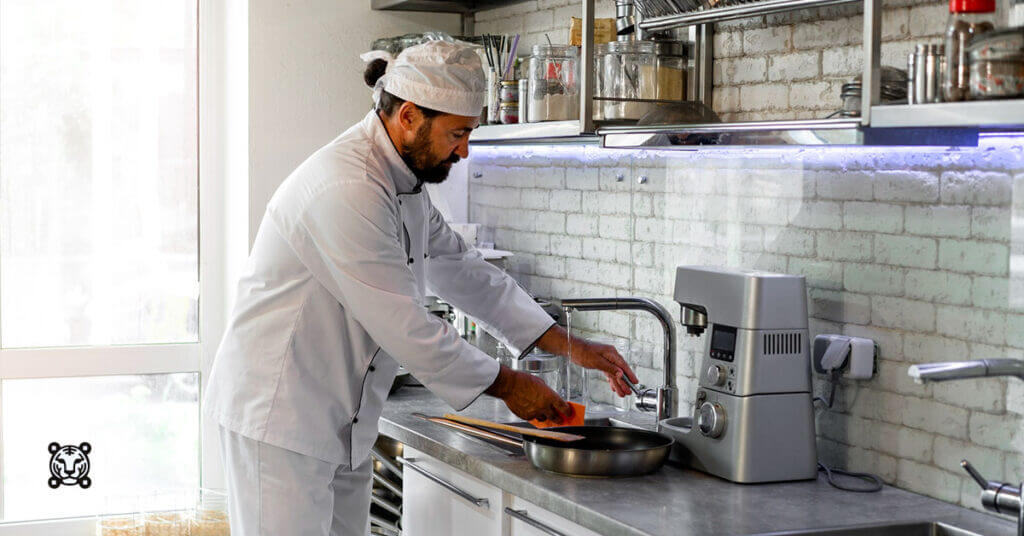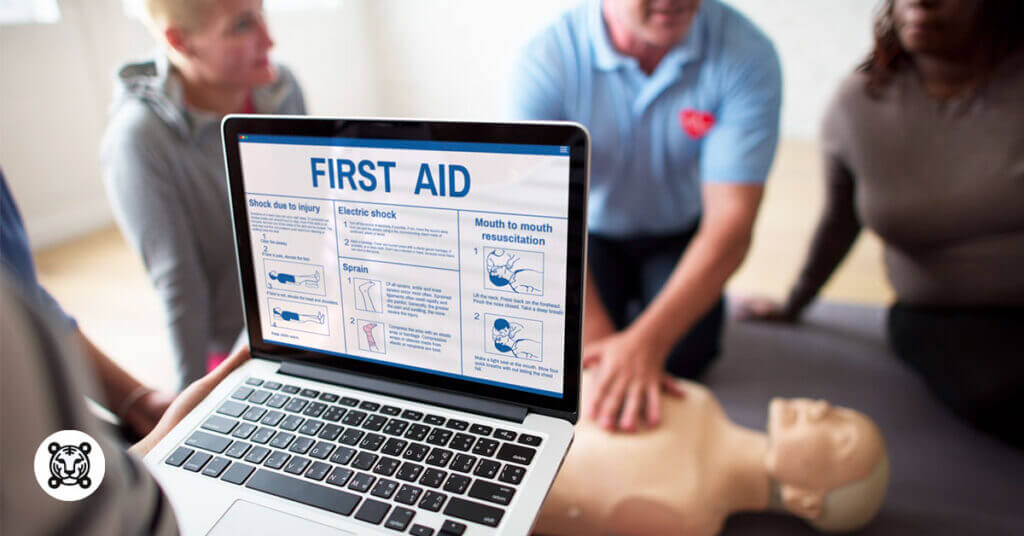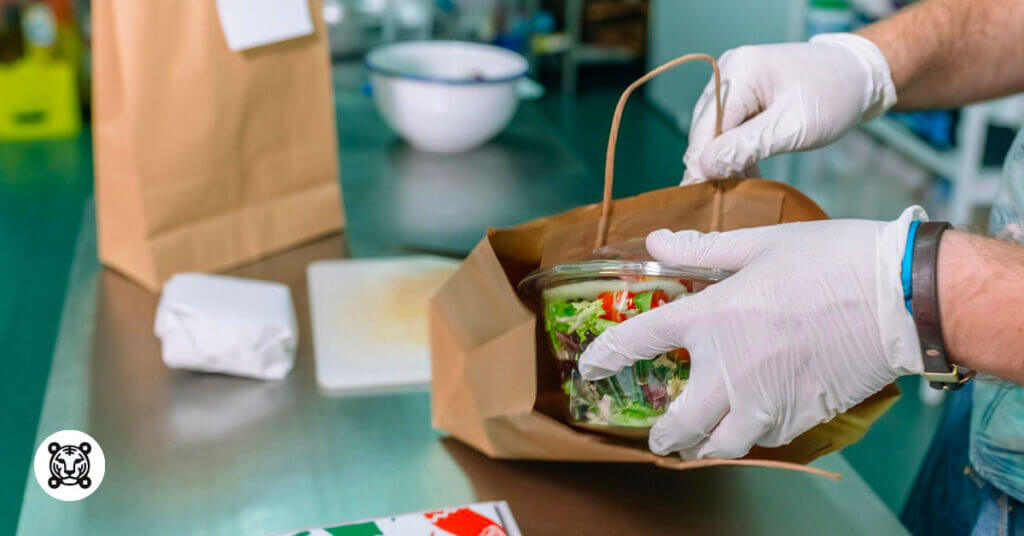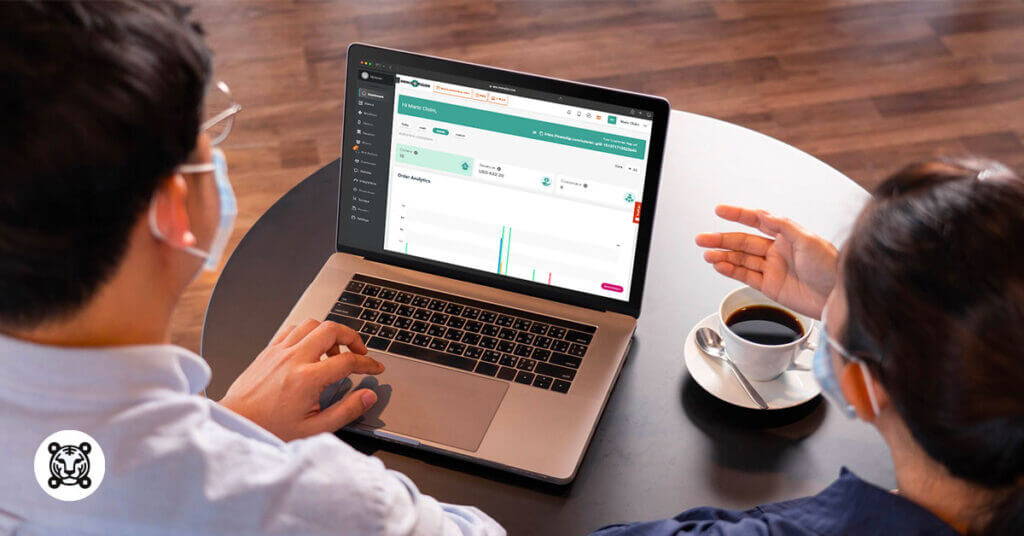
10+ Restaurant Safety and Hygiene Tips to and Best Practices
Last Updated: March 17, 2025
Restaurant safety is crucial for your business' reputation, maintaining your customer base and profitability, and keeping your licenses to operate.
The perfect solution is through regular staff training covering topics like proper food handling and emergency preparedness procedures.
And if you're using restaurant technologies like kitchen display systems, point-of-sale (POS) systems, or QR code menu software, it's also important to keep them updated and well-maintained.
Read further to know how you can secure a safe workplace for your staff and a hygienic dining place for your customers.
Restaurant safety measures for employees
Start with the basics—your staff. Well-trained employees are your first line of defense.
Regular training sessions, strict hygiene practices and implementation of restaurant safety procedures, and proper food handling minimize health risks if not completely obliterate them. This will make your restaurant a reputable establishment, which means less restaurant complaints from customers and more positive feedback.

Here are all the ways to secure a safe restaurant through your employees:
Employee training and awareness
Prioritizing employee training and awareness enhances restaurant health and safety and makes your staff proactive contributors to a secure working environment.
You can tailor training sessions to the specific needs of each employee position, whether it’s front-of-house, kitchen personnel, or management.
And remember that training should not be a one-time event.
Regular monthly or quarterly sessions are important to reinforce safety practices and introduce any protocol updates or changes.
You can cover topics like fire safety, emergency procedures, basic first aid, and food safety.
Cleanliness and hygiene protocols
Committing to a clean and hygienic front-of-house and back-of-house is an investment in the safety and well-being of everyone associated with your restaurant.
Plus, it’s critical to ensure a safe and enjoyable dining experience.
Front-of-house hygiene standards:
- Sanitizing high-touch surfaces. You need to identify and regularly sanitize surfaces such as tables, chairs, door handles, physical menus, and payment terminals. These are breeding grounds for germs and bacteria, and routine disinfection minimizes the risk of cross-contamination.
- Employee hygiene practices. Though it’s elementary knowledge, it’s important to continuously remind and instill the need for regular handwashing, the use of gloves when appropriate, and guidelines on personal grooming.
- Visible hygiene stations. Install visible hygiene stations with hand sanitizers or disinfectant wipes at key locations throughout the front of the house.
Back-of-house hygiene standards:
- Thorough kitchen cleaning routines. Establish comprehensive cleaning routines for kitchen surfaces, utensils, and equipment. Daily deep-cleaning schedules guarantee no food waste in restaurants or contaminants accumulate, which helps maintain a sanitary workplace.
- Regular health checks for staff. Initiate regular health checks for back-of-house staff to help identify potential health issues early on. This will also enable you to manage your employees by reassigning them or providing them with the rest needed to prevent further health implications.
- Temperature control for restaurant food safety. Enforce strict temperature control measures for both food storage and preparation. This ensures the quality of the food and mitigates the risk of foodborne illnesses.
Employee safety considerations
According to the US Bureau of Labor Statistics (BLS), workers in full-service restaurants incurred 93,800 nonfatal injuries and illnesses in 2019.
This resulted in at least one day to a month of off work, negatively affecting the industry.
As a restaurant owner or manager, this is something you should avoid.
You can ensure a safe working environment by providing thorough safety training, personal protective equipment (PPE), proper workstation ergonomics, and appropriate uniforms and shoes for restaurant workers.
Emergency preparedness
Preparation is the key to minimizing the impact of emergencies and maintaining a secure workplace.
By prioritizing protocols for fire safety, first aid training, and regular evacuation plan practices, you can create a safer environment for your staff and customers.

Also, these measures comply with safety regulations to keep your permits and licenses, instill confidence in your team, and ensure that they can respond effectively when it matters most.
Fire-related restaurant safety procedures
According to the US Fire Administration (USFA), about 6% of all nonresidential fires reported are caused by restaurant establishments. This caused over $100 million in property damage.
However, these tragedies would be mitigated with emergency preparedness if not completely avoided. Here are ways to ensure fire safety measures:
- Regularly conduct fire drills to ensure that every member of your staff knows the fire exit locations and proper handling of firefighting equipment.
- Regularly check the condition and accessibility of firefighting equipment, such as fire extinguishers, fire blankets, and sprinkler systems.
- Double-check if the equipment is up to date and properly maintained.
- Consider designating specific individuals as fire safety officers responsible for overseeing fire safety measures.
First aid training for staff
Minor injuries are an inevitable part of any workplace, and in a bustling restaurant, it can happen at any moment.
Giving your staff first aid training enables them to respond quickly and effectively to injuries, preventing them from escalating into more serious concerns.
Your training should cover a range of first aid topics. You can include treating minor burns and cuts as well as recognizing signs of more serious conditions.
Make sure that first aid kits are well-stocked and easily accessible and that your team members are familiar with their contents.
Evacuation plans and procedures
A well-communicated and practiced evacuation plan can be the difference between order and chaos.
So, it’s vital to have clear and easily understandable evacuation plans displayed prominently throughout the restaurant. And make sure that these plans account for different scenarios, such as fires, gas leaks, or other emergencies.
Regularly practice evacuation drills to reinforce the procedures outlined in your plan.
Restaurant food safety and hygiene
Your customers walk into the restaurant with the expectation that the meal they order will be delicious and safe to consumers.
Upholding this trust is important to any successful food establishment.

So, you need to know the importance of food safety and maintain rigorous adherence to hygiene standards throughout the entire operation. Here are ways to do it:
Allergen management
For many individuals, exposure to even trace amounts of certain allergens can lead to severe reactions. This means that you need to be highly conscious of potential allergens in your ingredients and dishes.
From the kitchen to the serving staff, your team should be knowledgeable about the allergens present in the menu items.
Training should include proper food preparation techniques, storage practices to prevent cross-contamination, and fast and accurate communication of allergen information to customers.
Clear menu labeling and communication with customers
Being transparent in labeling your menu is crucial.
Customers with dietary restrictions are more likely to choose and return to restaurants that prioritize their safety and make the dining experience enjoyable for everyone.
You can clearly communicate the ingredients through these:
- Indicate the presence of common allergens such as nuts, dairy, gluten, and shellfish on your menu through recognizable icons, symbols, or accurate descriptions.
- Ensure that your staff are aware of the ingredients used for each of your menu items.
- Train kitchen staff on the importance of using separate utensils, cutting boards, and cooking surfaces for dishes with allergens.
- Consider providing menu information on your digital platforms, such as your website, digital menu, or a dedicated app.
Employee hygiene practices
Educate your team on the critical importance of personal hygiene.
This goes beyond the basics of handwashing; it includes proper use of gloves, and hairnets, and ensuring that staff members who are unwell or have open wounds take necessary precautions.
Regular health inspections and compliance regulations
Address any issues identified during inspections promptly and comprehensively.
Whether it's related to food storage temperatures, kitchen cleanliness, or employee hygiene, swift corrective action demonstrates your commitment to safety. It prevents the escalation of minor issues into more significant problems.
Technology and safety

Implementation of safety technologies
Investing in safe restaurant technology can significantly boost the overall security and well-being of your establishment.
You can install security cameras for continuous surveillance, aiding in the quick identification of any suspicious activities.
Maintaining proper temperatures in various areas of your restaurant is also important, especially in food storage and preparation areas. This is where you’ll need temperature monitoring systems.
Try to also integrate no-contact menus like a scannable QR code menu. This lessens the risk of cross-contamination, potentially saving your staff and customers from health risks.
Equipment maintenance and safety checks
Regular maintenance of kitchen equipment is more than just a matter of extending their lifespan, it’s also a critical component of ensuring a safe working environment.
Routine safety checks, strict adherence to equipment maintenance, and comprehensive training programs for employees help you rectify potential issues with the equipment before they escalate into safety hazards.

How can a QR code menu assist with health and safety?
Using a QR code menu will help you promote touchless menu browsing. This way, customers can view items and order without the risk of cross-contamination.
This goes the same for your restaurant staff since they won’t have to attend to customers. It also gives them more time to do other tasks.
Using a QR code menu software also lets you easily include allergen information and update it as necessary. You won’t have to reprint a new batch of menus.
This falls right into the U.S. Food and Drug Administration (FDA) Food Code which requires that menus include allergen information.
Providing a modern and convenient way for customers to access your menu also creates a positive impression of your business and enhances customer satisfaction.
Implementing QR menus can impact the health and safety of your customers and staff, the compliance of your business, and the overall customer experience.
Why you should use MENU TIGER’s QR code menu software
MENU TIGER is an advanced yet easy-to-use digital menu software that can provide a safer, more efficient way for customers to access your menu. Here are some of the benefits it can offer:
Encourages a safer environment
MENU TIGER eliminates the need for physical menus. Customers can easily access your menu from their smartphones by scanning a QR code.
And since it’s an interactive restaurant menu software, diners can order and pay through their devices, minimizing the need for waitstaff.
This provides a safer environment for your customers of QR codes for restaurants and reduces the risk of transmission among your staff.
Complete food details
You must value the importance of food safety in your restaurant to guarantee your diners’ health and safety, and adding complete details of each menu offering is part of this.
You can add food descriptions using MENU TIGER so diners know the item’s ingredients. You can include allergens such as nuts and spices to warn customers who may be allergic to them.
This is particularly useful for picky eaters with dietary restrictions or personal preferences. This will also help cater to vegan customers who avoid meat at all costs.
With this feature, you can highlight the key ingredients in each dish and even provide alternative options for those who want to make a substitution.
Easy to set up and use
Setting up your restaurant order system through MENU TIGER is incredibly easy; no technical skills are required. It’s also simple to follow the software’s interface.
Simply follow the easy-to-understand instructions, and you'll be up and running in no time.
You won’t have difficulty navigating this advanced software, so you can focus on what matters most—running your restaurant.
Customizable
MENU TIGER gives you complete control over your menu design. You can customize everything, from the colors and fonts to the photos used to match your brand identity.
Further, it also allows you to design your menu QR code, which can be a powerful tool for promoting your brand. This can set you apart from your competitors.
Manage your restaurant operations smoothly
MENU TIGER can also be an excellent tool for managing your restaurant operations. This software can digitalize dine-in transactions and facilitate online orders for pickup.
And since it eliminates the need for waitstaff to attend to customers’ orders, employees can focus on other crucial tasks like back-of-house duties or preparing orders.
Moreover, managing multiple restaurant locations is possible since you don’t have to be present to keep track of your restaurant's activities.
Track customer behavior
MENU TIGER makes tracking customer orders and preferences easier. The software provides insights into your customers' preferences and tailor your offerings accordingly.
Further, it helps you identify your restaurant’s bestsellers quickly.
With access to this data, you can focus your marketing efforts on your most popular dishes, helping you increase sales and grow your business.
Moreover, by understanding customers’ preferences, you can cross-sell additional items that complement their orders, boosting sales and improving the overall customer experience.
Affordable pricing plans
MENU TIGER offers affordable pricing that fits any budget. You can choose a plan that suits your needs and pay only for what you use.
With MENU TIGER, you can provide a safer environment for your customers and staff without breaking the bank.

Prioritize food and health safety in your restaurant
Prioritizing restaurant safety is essential for maintaining your customers' well-being and your business's long-term success.
By implementing safety and hygiene guidelines and using innovative solutions like a digital menu, you can ensure a safe and pleasant experience for your customers and staff.
Investing in high-quality equipment, regular staff training, being up-to-date with the latest emergency procedures through face-to-face sessions, and knowing the right ways to use your restaurant technologies through various media such as a webinar or social media are just a few ways to secure your workplace and business.
FAQs
Riza
Riza is a versatile author for MENU TIGER. She draws inspiration from her passion for food, travel, and KPop. As a reader, writer, teacher, and food enthusiast, her stories reflect her restaurant adventures and spontaneous travels.


